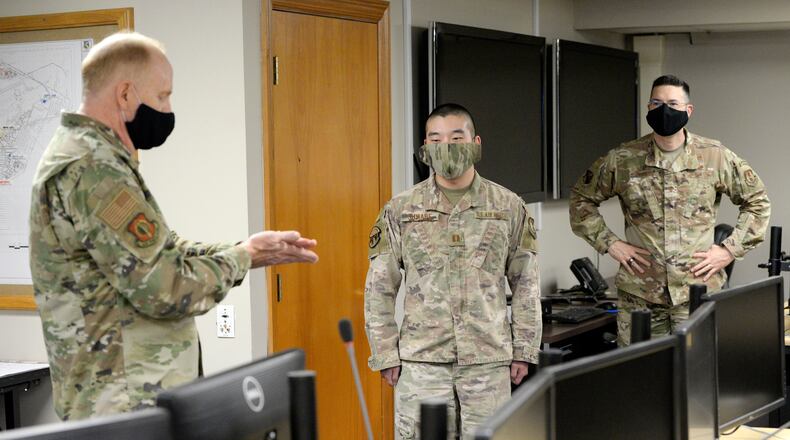Maj. Gen. Shaun Q. Morris has been nominated for promotion to lieutenant general and will become the commander of the Air Force Life Cycle Management Center (AFLCMC), the Air Force said Wednesday.
If confirmed, Morris will replace Lt. Gen. Robert McMurry, who has led AFLCMC since May 2017.
MORE: DP&L CEO to step down: Leaving 'is a bittersweet decision'
Morris today is commander of the Air Force Nuclear Weapons Center and is Air Force Program executive officer for Strategic Systems at Kirtland Air Force Base, New Mexico, the Air Force said. In his new position Morris will oversee management of the life span of aircraft, engines, munitions and electronic systems, many of them aging.
Credit: KAFB Photo Studio
Credit: KAFB Photo Studio
Led by a three-star general, AFLCMC is one of six centers reporting to the Air Force Materiel Command, also based at Wright-Patterson. About 26,000 AFLCMC airmen, civilian and contractors work from nine major locations and dozens of smaller sites.
The nomination has been announced as a new plan for returning to work is being released by Wright-Patterson.
The plan, as announced by Col. Tom Sherman, 88th Air Base Wing and installation commander, will have commanders and directors gradually bringing 20% of their assigned workforce back to their offices and work centers, with base officials expecting about 3,000 to 4,000 people on base initially.
RELATED: 'Magnet for high tech:' How research drives Wright-Patt's $15.5B impact
Some people will continue working from home, for example, working a week on base, then working from home for two weeks before returning, Wright-Patterson said in a release.
Base personnel are being told continue practicing social distancing, wearing face coverings, handwashing, hygiene and sanitation of offices.
Staggered arrival, departure, lunch and break times will also be employed.
In-person meetings are to have fewer than 10 people. “In fact, the use of virtual meetings is encouraged when possible,” the base said.
“Our ultimate goal is to create an environment that gives our mission partners the greatest flexibility while reinforcing care and health for all of our employees,” Sherman said in a statement. “Furthermore, we want everyone to feel confident and comfortable with the tremendous efforts of all involved in the planning for this transition into phase 1.”
RELATED: Why it's important to protect Wright-Patt and what Dayton is doing about it
About the Author


